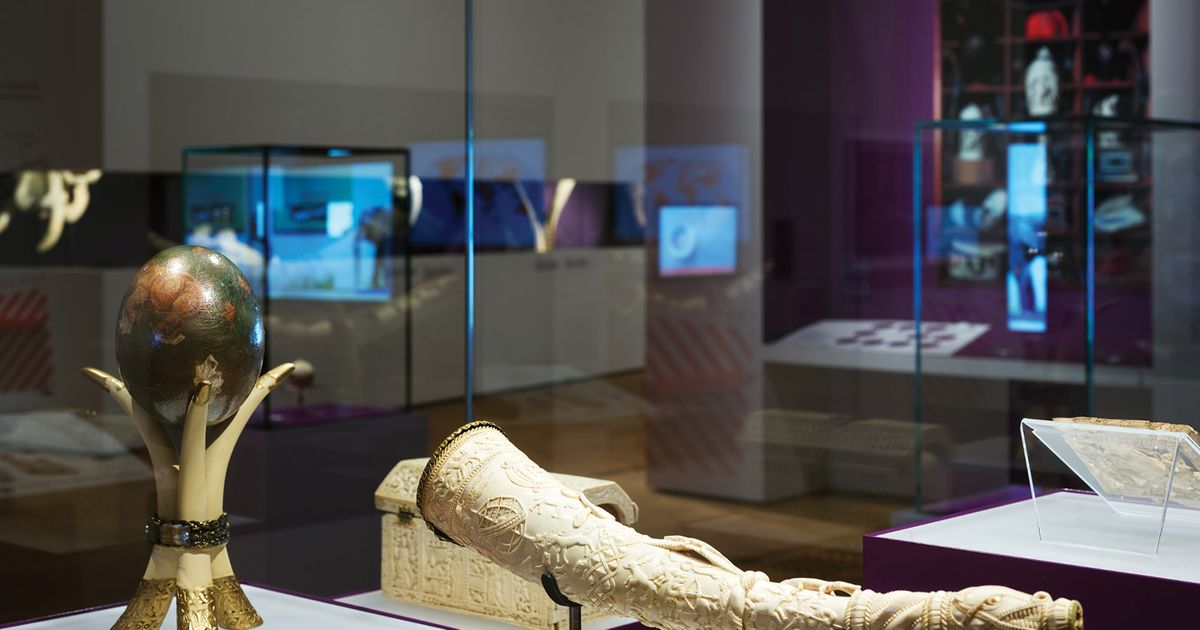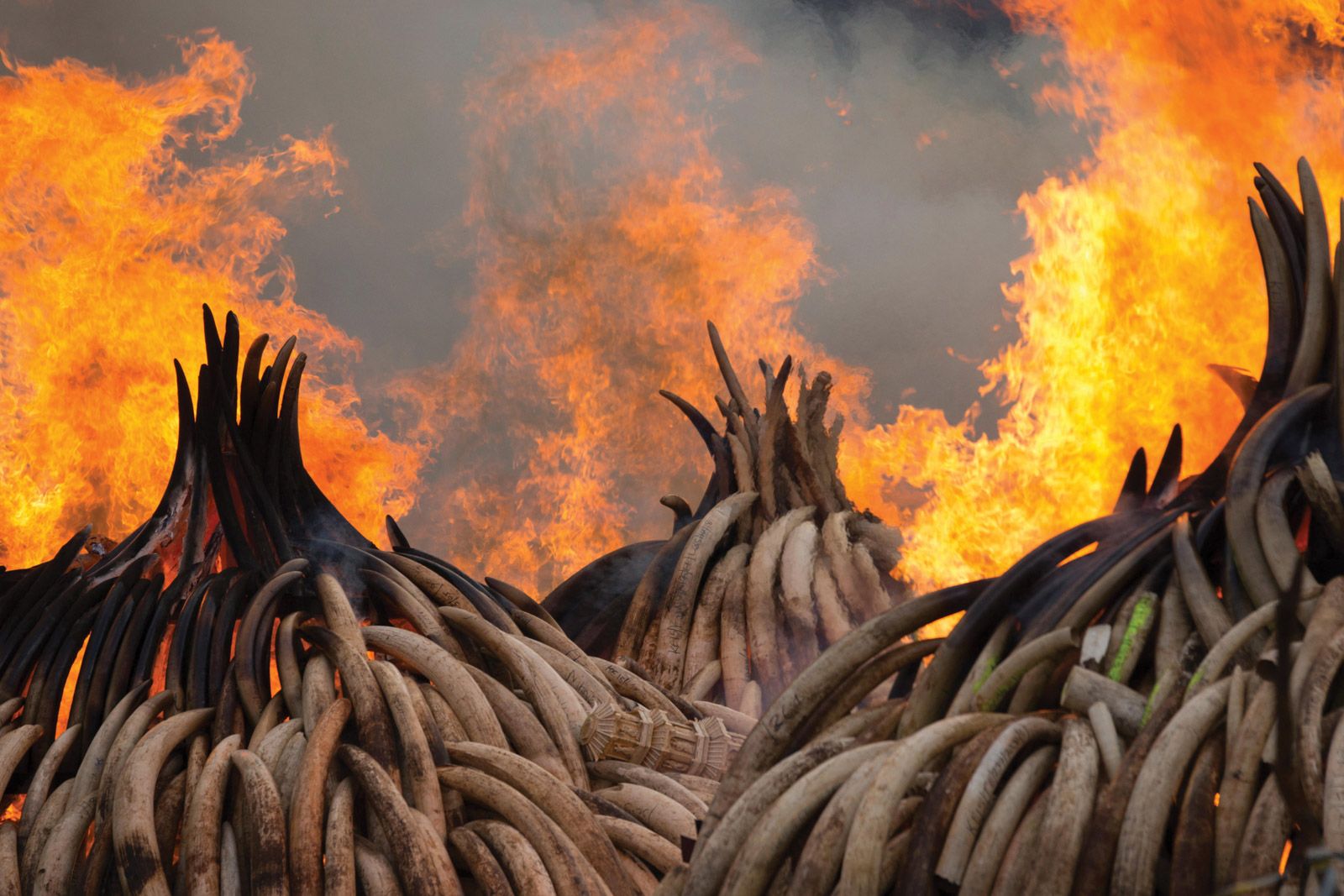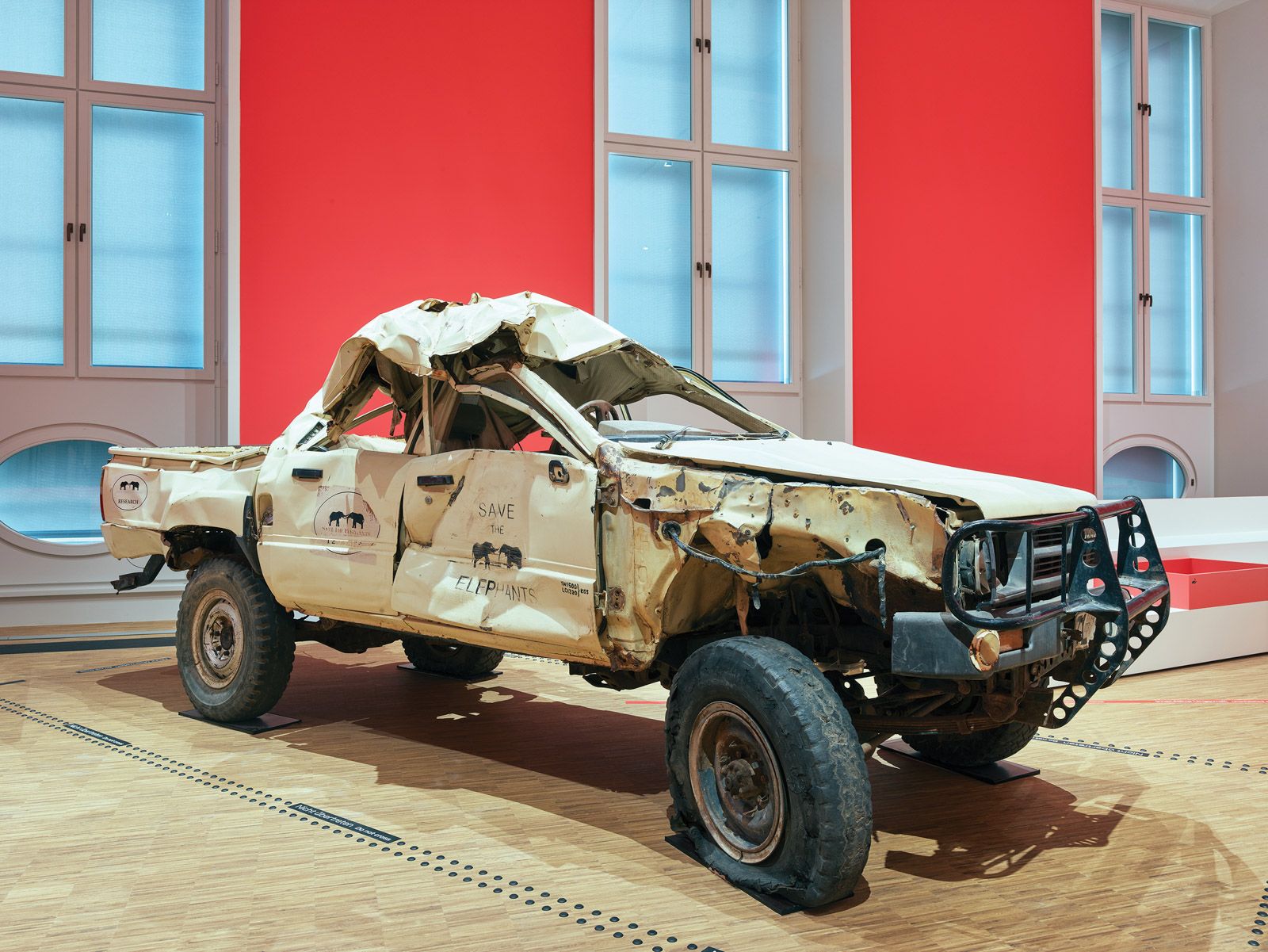
“Mum, look!” A boy of about ten could barely contain his excitement. “You can touch a mammoth’s tusk!”
It is a thrill for adults, too, to run fingers over the creamy, warm, smooth tooth of a creature that has been extinct for about 4,000 years and compare it with the ivory of its modern-day cousin, the elephant. The tusk can be touched at Terrible Beauty: Elephant—Human—Ivory, one of the first exhibitions at the Humboldt Forum in Berlin.
The vast new museum complex in a reconstruction of the Prussian royal palace opened after many construction and pandemic-related delays in July. But long before that, the Humboldt Forum served as a lightning rod for the national debate about the legacy of colonialism.
And as the opening approached, the decision to house the city’s ethnographic collections—including thousands of objects looted during the colonial era—inside a reconstruction of the residence of the kings who oversaw the plunder, destruction and genocide seemed increasingly jarring. Activists protested against the “imperial messaging”.

Yet this uncomfortable juxtaposition of perpetrators and victims has also focused minds. Germany’s chattering classes expect the Humboldt Forum to tackle challenging issues unflinchingly, particularly those relating to colonialism. Built at a cost of €680m—mostly provided by taxpayers—the Humboldt Forum faces high expectations.
The message has been received. Hartmut Dorgerloh, the general director of the Humboldt Forum, says its exhibitions should address “problematic issues” and “stimulate discussion”. The ethnographic display—which can expect particularly intense scrutiny—will not open until the end of September. But if Terrible Beauty, an exploration of the global trade in ivory, provides a foretaste of what is to come, there is reason to be optimistic.
It is exactly the kind of show the Humboldt Forum should be putting on—melding the natural world and arts and culture to reflect the interests of the polymath brothers who gave the new museum complex its name. (Alexander von Humboldt was a geographer, naturalist and explorer; his brother Wilhelm was a philosopher and linguist.)
Poachers and gamekeepers
Developed by the Berlin State Museums and the city’s Natural History Museum in cooperation with the National Museums of Kenya, the exhibition makes a serious effort to be as comprehensive and inclusive as possible, encompassing a wide range of perspectives and voices. We hear from former poachers and gamekeepers, from hunting advocates and from conservationists in a series of filmed documentary interviews.
We also hear the voice of the elephant. The grunts and wheezes of an elephant dying on film—this one, unusually, from natural causes—echo through the exhibition halls. It is an omnipresent reminder of who pays the highest price for this prized material—durable though soft, strong yet versatile.
The show traces the obsession with ivory across the millennia, taking us back 40,000 years to the Swabian mountains, where mammoths roamed the grassy steppes and the earliest figurative art has been discovered. Mammoth tusks were fashioned into miniature mammoths and lions and beads. One extraordinary artefact on show is a flute made of mammoth ivory that dates back to about 38,000 BC.

After mammoths died out, the trade in elephant ivory began to fulfil continuing demand. In the ancient world, elephants flourished in many more regions than today, including most of Africa and Asia and parts of the Middle East. In the Late Roman period, over-hunting and climate change forced the extinction of the North African elephant population.
But developing trade routes enabled access to elephants whose habitat was much further afield: lavish ivory diptychs celebrating the triumphs of Roman emperors date back to the fourth century.
By the Gothic period, innovations in shipbuilding increased the traffic between northern Europe and western Africa, resulting in a flourishing of ivory artistry. A beautiful statuette of the Virgin and Child carved in the 13th century, from Sainte-Chapelle in Paris, exploited the curve of the tusk to give the figure a graceful pose.
The country that adopted the material as its name, Ivory Coast, was the main shipment point from the 15th century. By the 1800s, an average of 850 tons of ivory were exported to Europe and America each year. Until then, it had mainly been used for items of spiritual or artistic significance. Now it was turned into everyday objects such as billiard balls, cutlery handles and doorknobs—and even sex aids and jaw prostheses. The insatiable 19th-century demand for ivory cost an estimated 20 million African elephants their lives.
Halting the trade
At the beginning of the 20th century, between three million and five million elephants roamed the savannah and forests of Africa. Today there are only 400,000 left. But despite an international ban on the commercial trade in ivory in force since 1989, a black market worth billions continues to thrive. Up to 20,000 African elephants are still killed for their ivory each year. The primary destinations for illegal exports are China and Vietnam.
One of the most shocking images in the exhibition is a photograph of burning stacks of confiscated elephant tusks in Kenya, where seized ivory is destroyed to prevent it re-entering circulation.
Globally, further measures are under consideration to prevent the trade. The UK’s hotly debated Ivory Act of 2018, described by the government as “world leading”, has faced a series of legal challenges that have delayed it from being enacted. But when it comes into force, it will impose a near total ban on imports of elephant ivory products regardless of their age. The government is also considering broadening it to encompass other ivory-bearing animals—narwhals, killer whales, walruses and hippopotamuses.
The Humboldt Forum offers some fascinating nuggets of information for visitors of every age group. Who knew that Germany’s Max Planck Institute has developed a synthetic ivory that can be used for piano keys? Or that nature has responded to elephant poaching with African elephants that have no tusks or only small ones? Children may be particularly interested in a spectacularly crumpled off-road vehicle on display—it once had a run-in with an aggressive elephant in Kenya known as Rommel.
The catalogue accompanying the exhibition delves deeper, looking at the question of how—and even whether—ivory should be shown in museums. In 2018, the British Museum was confronted with the decision of whether to accept a donation of more than 500 ivory figures from a private donor (it did in the end, sparking an uproar).
A carved ivory bust of King Leopold II, the brutal ruler of the Congo until 1908, has now been hidden from view at the Royal Museum for Central Africa in Tervuren in Belgium. It is, as the animal rights scholar S. Marek Muller puts it, a reminder of “the lack of reparations paid to colonised subjects—both human and animal”.
Those questions lie at the core of Terrible Beauty. An exquisite 16th-century casket from Sri Lanka, an improbably tall and slender 17th-century table centrepiece by the Baroque sculptor Markus Heiden, a delicate Japanese netsuke portraying a pair of lovers, and a haunting mask from Benin are among the jaw-dropping objects on display.
But the soundtrack accompanying any enjoyment of these treasures is the last gasp of an elephant. It is not subtle, but it works.
• Terrible Beauty: Elephant—Human—Ivory, Humboldt Forum, Berlin, until 28 November. Curators: Grit Keller, Alberto Saviello and Daniel Tyradellis
Source link : https://www.theartnewspaper.com/review/terrible-beauty-elephant-human-ivory












